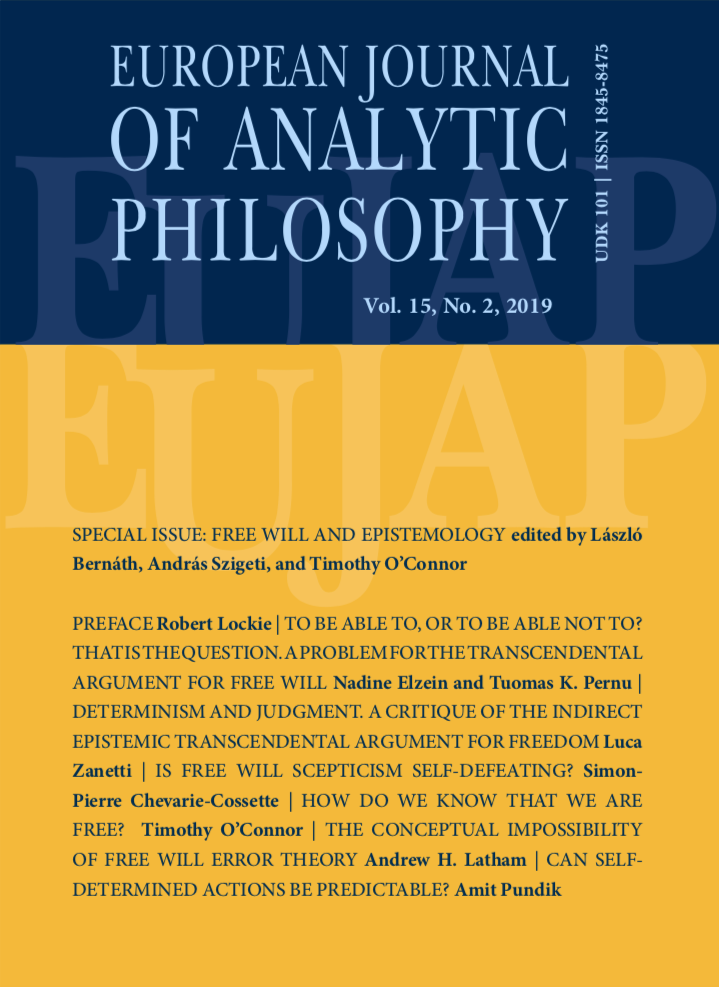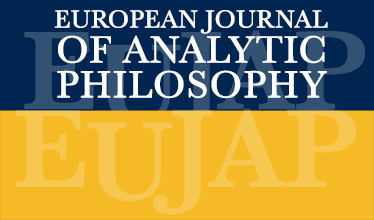BOOK REVIEW
Rafe McGregor, A CRIMINOLOGY OF NARRATIVE FICTION, Bristol University Press, 2021, pp. 176, ISBN: 978-1529208054, Hardback, €74.70 / $66.09 DOWNLOAD PDF
Iris Vidmar Jovanović (University of Rijeka, Faculty of Humanities and Social Sciences)
© 2021 Iris Vidmar Jovanović
According to Rafe McGregor, fictional narrative representations can explain the causes of crime and social harm, which is why they should be employed to direct public policy and the practice of criminal justice professionals. More to the point, McGregor argues that those fictional works dealing with crime, crime-related practice and harm have the potential to expose the causes of that harm, and thus to contribute to reducing it.
Underneath this precise and straightforward idea is a rather complex theoretical framework stretching from literary aesthetics to various branches of criminology. McGregor’s primary interest is to establish his account as a contribution to criminological studies, supported by philosophical theories on the cognitive value of fiction, which would recognize that criminological fiction should not be reduced to criminological imagination, but should instead be recognized for the concrete benefits it can induce.
McGregor positions his theory (in the first three chapters, and with a summary in the conclusion) with respect to narrative criminological framework, cultural criminological and critical realist framework. This part of the book may seem the most technical and demanding for those coming to it outside of criminology, and the most thought-provoking and challenging to the criminologists. While much under the influence of Lois Presser (whose work he identifies as the leading voice in the narrative criminology), McGregor is careful to highlight the differences among them, two of which are the most relevant. Unlike Presser, McGregor is concerned with fictional, rather than real life stories; and he is not engaged with exploring the ethical aspect of stories (having already done so in his Narrative Justice). With respect to fictional criminologies, McGregor is (chapter 3) very detailed in comparing and contrasting his work to the one done within the cultural criminological framework by Jon Frauley, Nicole Rafter and Vincenzo Ruggiero.
McGregor analyses three epistemic roles for narrative fiction in criminological inquiry. The semiotic one refers to narrative fiction providing knowledge of the production and reception of representations of crime and its control; fiction’s pedagogical role is to facilitate, augment, or enhance the communication of criminological knowledge and its etiological role relates to providing knowledge of the causes of crime or social harm in virtue of providing phenomenological, counterfactual and mimetic knowledge (more on this below). For the most part, McGregor is interested in fiction’s etiological role, claiming that only those works which are imbued with such value can contribute to crime reduction. The crucial issue then is to explain which works in fact have such a value.
The other theoretical line in McGregor’s theory is his presupposing (rather than arguing in favor of) the doctrine of literary cognitivism, the view that narrative literary fiction is a source of knowledge. McGregor has already established himself as a fervent advocator of this theory and in this book he applies his bent of the theory to particular case studies: an array of works he takes to exemplify his take on the narrative fiction’s contribution to criminology. As McGregor sees it, there are three types of knowledge available in works of fiction, transferable to three types of values. First, phenomenological value is the value of the representation of the subjective experience of offenders derived from the capacity of literary works to convey the phenomenological knowledge of what is like to be a perpetrator of a certain crime. Second, literary fictions have counterfactual value defined as the extent to which a given work “provides knowledge of reality by means of exploring alternatives to that reality” (91). Third, mimetic value relates to the representation’s capacity to provide knowledge of the everyday reality, primarily, as McGregor argues, the type of knowledge that is not available “to nonfictional representations for reasons of access, ethics or law” (113).
On McGregor’s view, there are three types of crime that can be exposed through fiction: state, ordinary, and organized. To this is also related a three-partite division of modes of representations: literary, cinematic and hybrid. Although there is no necessary relation among the criminological values and modes of representation, in the sense that all values are available through all forms of representations, there is a stronger relation between cinematic mode of representation and mimetic knowledge. Elaborating on that claim is the topic of the penultimate chapter, where McGregor engages with Berys Gaut and Greg Currie’s theories on film and the types of realism film can advance.
Chapters five to seven are dedicated to exemplifying McGregor’s theoretical claims regarding criminological fiction by extensive, informative and thought-provoking analysis of the case studies, all of which are taken from the popular culture rather than high art domain––examples include novels (e.g. Martin Amis’ The Zone of Interest), films (Miami Vice, No Country for Old Men) and series (ITV’s Broadchurch). The relevance of popular culture is in particular emphasized in the chapter dealing with cinema, as McGregor invokes (echoing Noel Carroll’s arguments) the accessibility of popular art. On his view, part of what makes fiction, primarily cinema, such a powerful tool for the criminological investigation and for the communication of knowledge is its immense popularity, itself a result of its availability with the masses.
The emphasis on works from popular culture is further relevant for McGregor’s concerns with fiction (rather than with art in the evaluative sense) or narratives (a topic he already addressed in his Narrative Justice, where he argued that the fiction/non-fiction distinction is of lesser importance for the narrative’s capacity to deliver phenomenological knowledge). One of the main aims he sets out for himself is to provide a space within criminology for taking fiction seriously, that is, for showing that “fiction can provide actual data that complements the data provided by traditional academic and documentary sources” (3). Such fiction’s capacity is related to its giving knowledge of what certain experiences are like, in giving knowledge about the non-existent situations and detailed and accurate knowledge of everyday reality.
McGregor is aware that his arguments are “counterintuitive and (…) highly unpopular” (3) with the criminologists, and is more concerned with proving them wrong than with converting the skeptics of the cognitive benefits of fiction. Unlike some scholars who recognize similar power with crime fiction and are concerned with tracking the mimetic elements in popular works dealing with crime in order to establish their potency with respect to providing understanding of crime,[1] McGregor does not seem to be too concerned with the traditional notion of fiction as breaking the fidelity to the world/life constraint. This isn’t necessarily a fault in the book, since many philosophers have argued that fiction is not divorced from the truth, from how things are, from the state of the world. McGregor may be right in simply building upon that foundation, pointing only in the penultimate chapter to the fact that some works (his example is Beverly Hills Cop) may have pedagogical but not etiological value, having sacrificed such value for the wider accessibility of the film. However, it is not quite obvious that this example suffices to provide means of distinguishing reliable from unreliable works (i.e. works with etiological value from those lacking it), particularly given his endorsement of the accessibility condition for the works’ overall success in reaching the wider audience––a condition so crucial to his argument. In other words, it may be interesting to press McGregor on developing a more clear-cut criterion that helps differentiate between those works which transfer criminological knowledge from those which do not. For those who share McGregor’s intuition, the examples he offers may be enough, particularly when supported with such masterful analysis as his account of the Broadchurch, where he tackles the legal issues related to rape, public prejudice related to the victims and perpetrators, and the like.
For those however who are on the fence, the book may not be sufficiently convincing, despite McGregor’s insightful analysis of the representational devices employed by the works to convey knowledge he attributes to his examples. For example, I share his conviction that the fictional description of the lived experiences of the perpetrators of the crime can explain the causes of the crime,[2] but I am reluctant in accepting McGregor’s further claim, according to which such a link (from lived experience to understanding the causes of the crime) can indeed contribute to its reduction. Not all criminological fiction is a cautionary tale and some descriptions may simply be deficient in some way, even if the work seems to have aetiological value. In addition, one may feel that McGregor is too quick to take the experience of one (fictional) character as representative of a class of people who are in some sense similar to that character, as he does in suggesting the analogy among fictional undercover cop and undercover agents in the real world. Furthermore, I wonder why McGregor does not consider the perspective of a victim of a crime as in any way potent with phenomenological (what is like) and mimetic (how it is) values. Given his take on the rape case in Broadchurch, one would expect him to make a case for the perspective of a victim.
Leaving such worries for the conferences, let me end by recommending this book to those interested in literary cognitivism, in fiction and in the link between fiction and our social reality. While occasionally hard to read due to McGregor’s adherence to the analytic style, the author offers sufficient repetitions and concluding statements to allow for comprehension. Given the popularity of mass art nowadays, his book is a much needed account of why it should not be dismissed as light, trivial or lacking in cultural and educational values. Furthermore, crime genre has always had a special place in our culture and within the humanities. McGregor’s book is an immensely insightful contribution to exploring, reaffirming and honoring its status and value.[3]
Endnotes
- A good example is Peter Swirski’s American Crime Fiction: A Cultural History of Nobrow Literature as Art (2016, Palgrave Macmillan). ↑
- In arguing this, McGregor is restating some of his arguments from his Narrative Justice (2018, Rowman & Littlefield), primarily the concept of the „standard mode of engagement” originally developed by Greg Currie. I criticized such approach to cognitive value of fiction in Vidmar Jovanović (2020), “Becoming Sensible: Thoughts on Rafe McGregor’s Narrative Justice”, The Journal of Aesthetic Education. I will not restate my arguments here for reasons of space, though I think they apply with even greater force, given McGregor’s focus on fiction. ↑
- This work has been supported in part by Croatian Science Foundation, grant UIP-2020-02-1309. ↑


